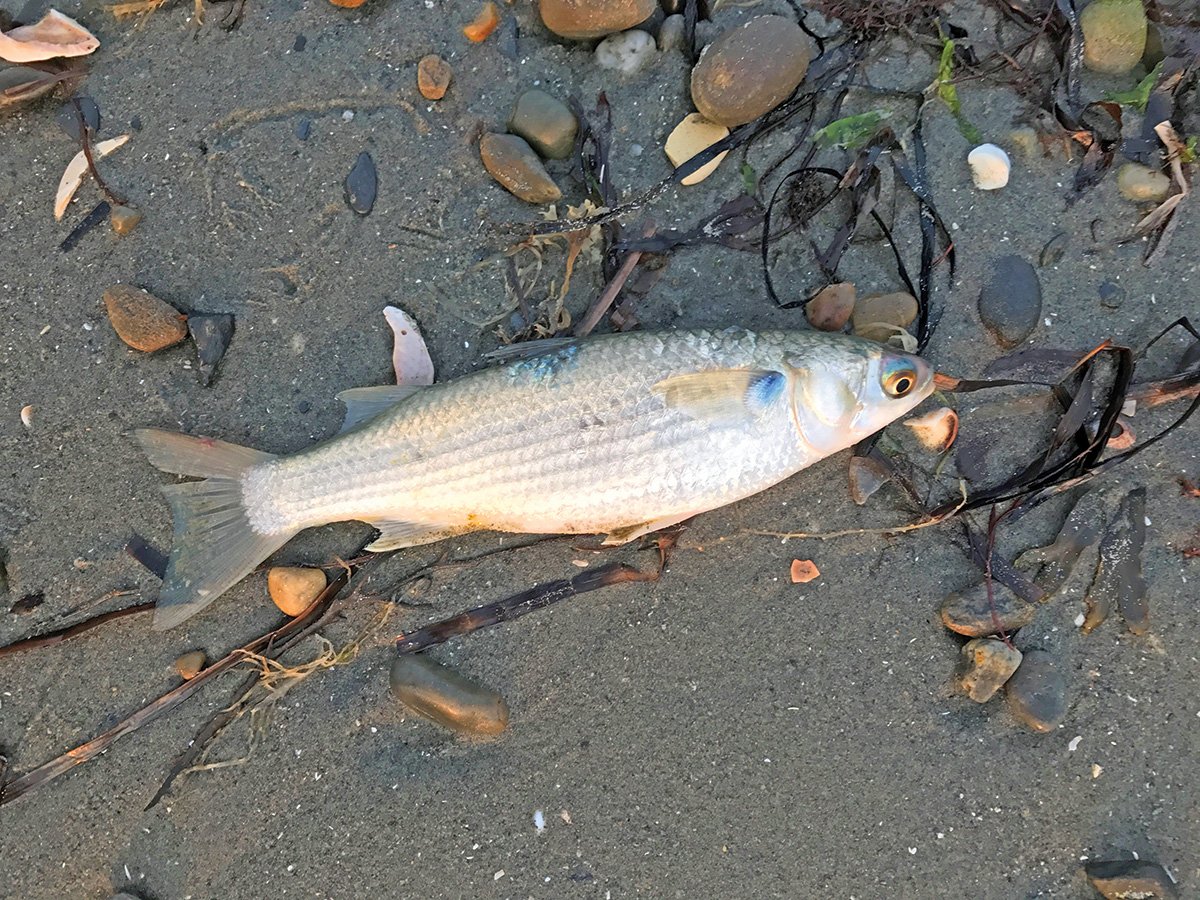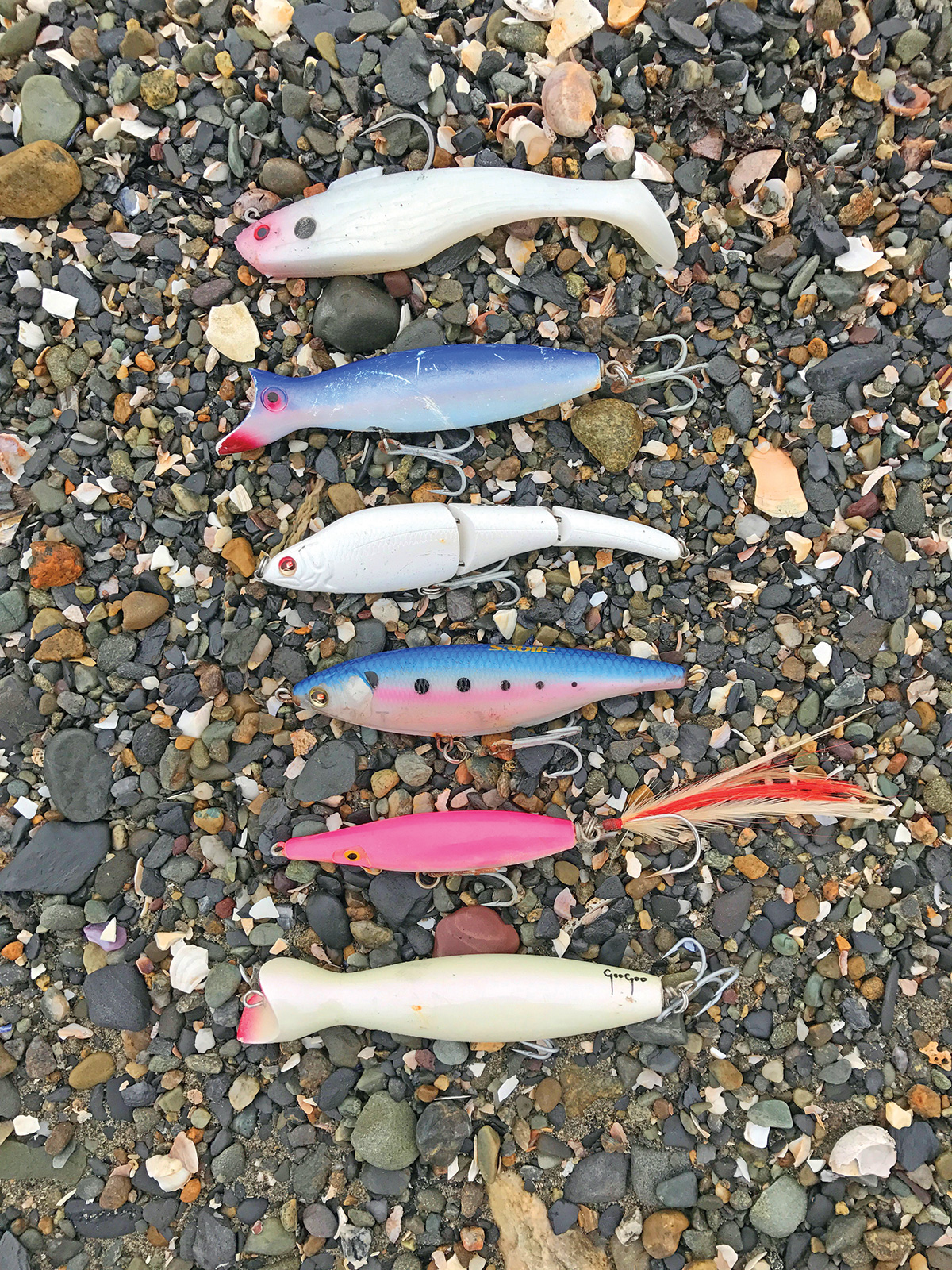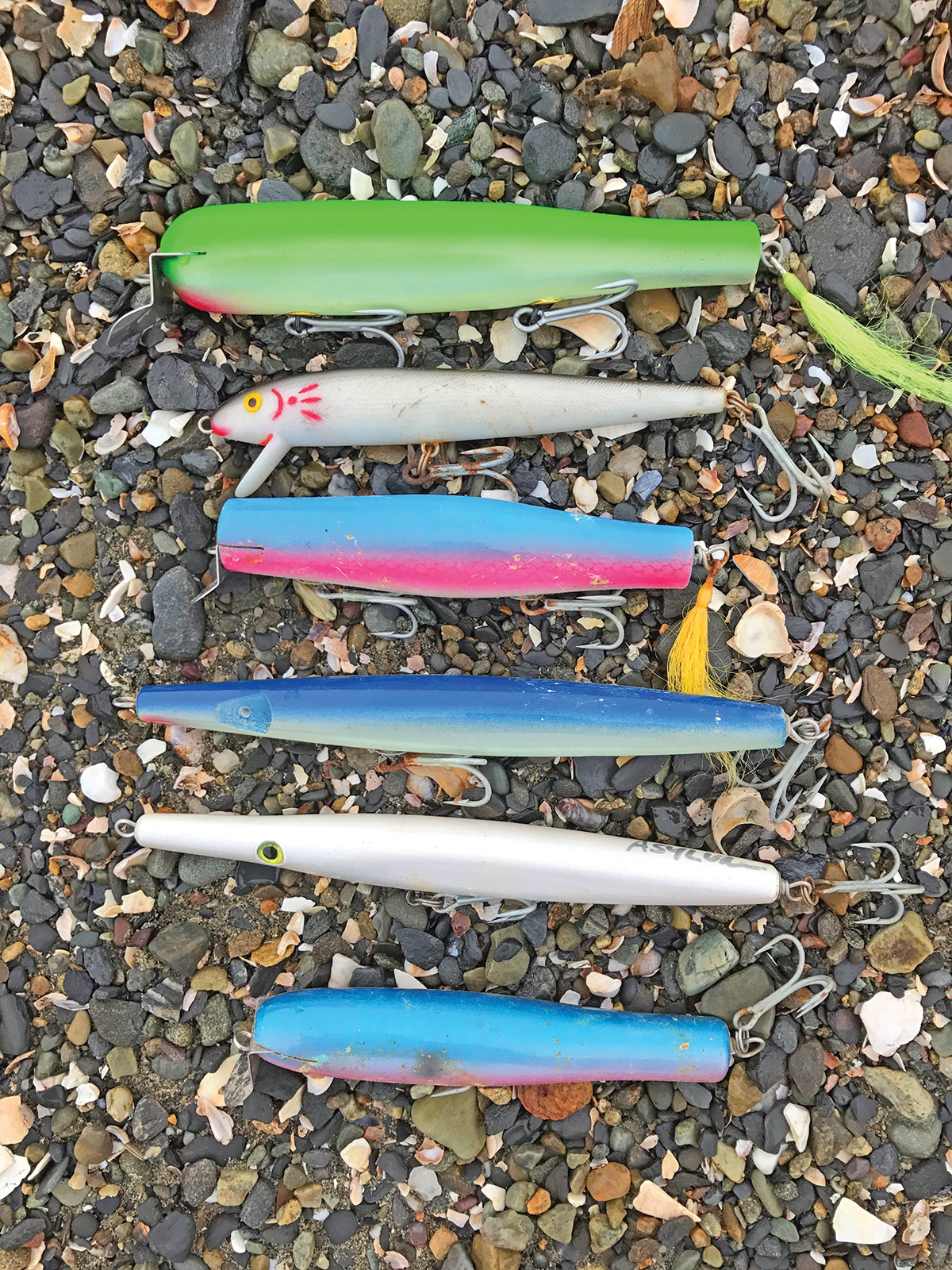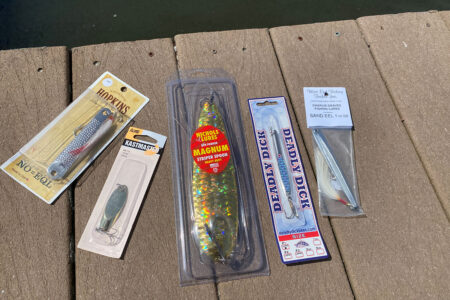
Make that heavily-weighted pencil popper work throughout the water column.
It was late-September, many years ago now, maybe 2004? I had been fishing a small inlet for a few nights in a row with very good results under a full moon. The fish had been blitzing in the surf, crushing Bombers and other swimmers without any regard for color or size. The fish weren’t large, ranging between 25 and 38 inches, but it was a heck of a lot of fun and it felt great to be into blitz fishing when no one could see it from the road and come crash the party.
On what I think was the third night, the bite was slow, we caught a couple fish but it almost seemed like the fish were just milling around waiting for something. Most of the hits we had were timid bumps with a few finding the hooks. I waded back inside the inlet and found literally tens of thousands of finger mullet in shallow grass. As the tide receded they were forced into the channel and flushed out into the ocean; this is what the fish were waiting for!
Fast-forward eight or so years to a mid-September day, an offshore hurricane was sending mountainous waves inshore, and I thought for sure I was going to be freshwater fishing for the next week. I was desperate to surf fish though and, against my instincts, I took a ride to look at a few spots that I knew fished well in a big heave. The first spot was a dead zone; when I arrived at the second spot, the water was gray and I almost turned and walked away but I saw one gull hovering, then I saw a spray of long, slender silver burst from the water below the bird. To keep a long story short, I crushed fish that afternoon into the high-20s, but when we came back after dark we were able to add 10 pounds to the average fish.
Joe Dirt
Big surf is your friend when you find a big pile of mullet pinned to the beach. In my observation, the mullet stay in the skinniest possible water and just zig-zag with the rise and fall of each crashing swell. With a pile of bass waiting on the lip, the mullet will stay for days on end with no escape in sight. When the surf lies down, the mullet get out of Dodge. And as the above paragraph suggests, if you think you’re cashing-in on good fish in daylight, come back when it’s dark.
I have found that frantic action very often wins out over subtlety when mullet are on the menu. This means stocking the bag with Super Strike bottles, bottle darters, SP Minnows and Red Fins. It also means leaving the needlefish at home, all except the Bullet, which has been a secret weapon for me in mullet blitzes, fished so fast it skips on the surface. Another bait that will draw strikes is a Tsunami 6-inch shad.
The key for me, in big surf, has been to think about how the mullet must be reacting to the surging waves. No matter what their size, the mullet are going to have to work hard to stay in the safer shallows as the waves push and pull. Your goal is to replicate that unlucky baitfish that was pulled out by the surf and is now cranking up the afterburners screaming back in toward shore. As I’m writing this, it occurs to me that the mid-sized Stick Shadd would work very well in this situation; I’m going to have to try that.

Calm Seas
The profile changes when the seas are calm. If I know mullet are in the area, I concentrate my efforts in shallower spots that feature a noticeable sweep. This plays into the fact that mullet seem to like shallower water, but I envision that moving water as a conveyor belt, ushering pods of bait and bass through my casting zone. What I really like to find is the end of the flat, standing where the moving water dumps off of the flat into deeper water. This sets up a classic ambush scenario, and it very often pays off.
Because the bait is not being pushed by waves and bass, I favor slow-moving offerings in these situations; Atom 40s, Atom Juniors, Danny plugs and wide-profile needles are some of my favorites, and I also really like a loaded Red Fin in this situation. Mullet schools are known to move right below the surface, leaving a formation of v-wakes as they move past; I like to use the metal lips to replicate this—fishing them slowly on the surface throwing a wide wake. Same deal with the needles, but I like to use very slow-sinking needles because you can get some additional action by adding a few twitches in here and there; Afterhours Needles, different incarnations of the Wadd and my own Flat-Glide needles are my favorites. The Atom Junior and Red Fin give me a subsurface option that I can fish at varying speeds if the slow roll isn’t getting any love.
As odd as it may seem, I have not had many experiences at all where these ‘rules’ were reversed, big water + mullet nearly always means a frantic retrieve gets crushed. Conversely, calm water and mullet means slow action and waking lures take most of the fish. This is what has worked for me, nothing is absolute in surfcasting, but patterns are patterns.

Where Are the Mullet?
Mullet seem to have a set range; I have never heard of them making it further north than New Bedford, and they really aren’t prominent until you start closing in on Point Judith, from there they can be found in nearly every inlet until you get into eastern Long Island Sound, then they seem to skip right over to Montauk and run the beaches along the south side of Long Island, through Jersey and all the way down to Florida from there. Long Island Sound rarely, if ever has them; Block Island seems to never have mullet.
I look for baitfish waking along in patches of nervous water; sometimes you might find them in water just a few inches deep, running up and down with the waves. Mullet can run between 4 and 10 inches, the most common size seems to be 5 to 7 inches. I begin looking for them in Rhode Island around the second week of September, go up inside salt ponds, rivers or breachways and look for patches of nervous water, 4- to 10-inch fish jumping out of the water randomly and small pods of wide-bodied baitfish running in close to shore. Don’t mistake snappers for mullet though; this is a common mistake. When you find them, look for them to move out on the next moon. And buckle up, because the action can be awesome when they pass through the mouth of the inlet and run along the adjacent beaches. And heed my advice, the daytime action is fun, but it’s the dark bite that brings in the big girls.



